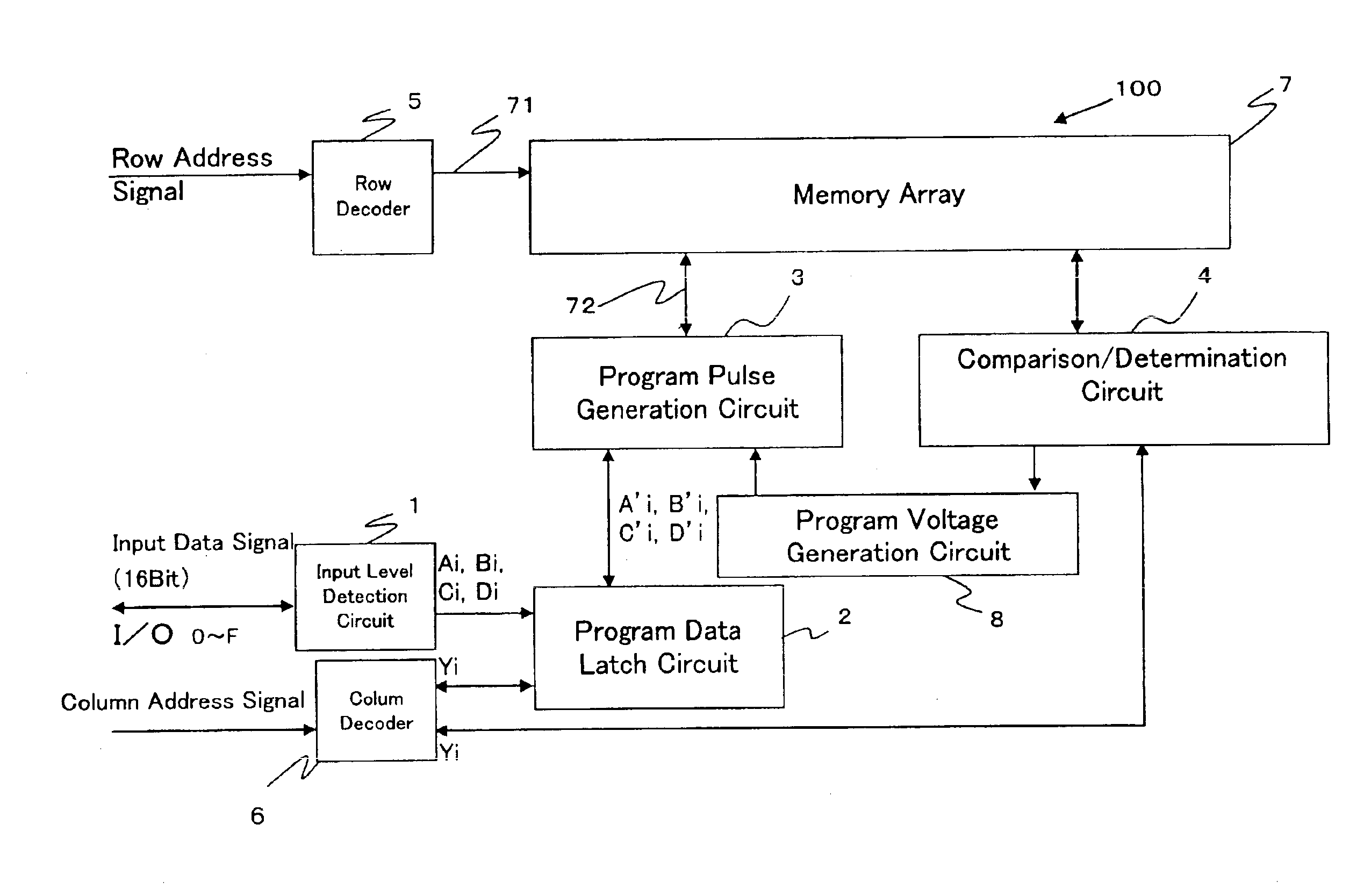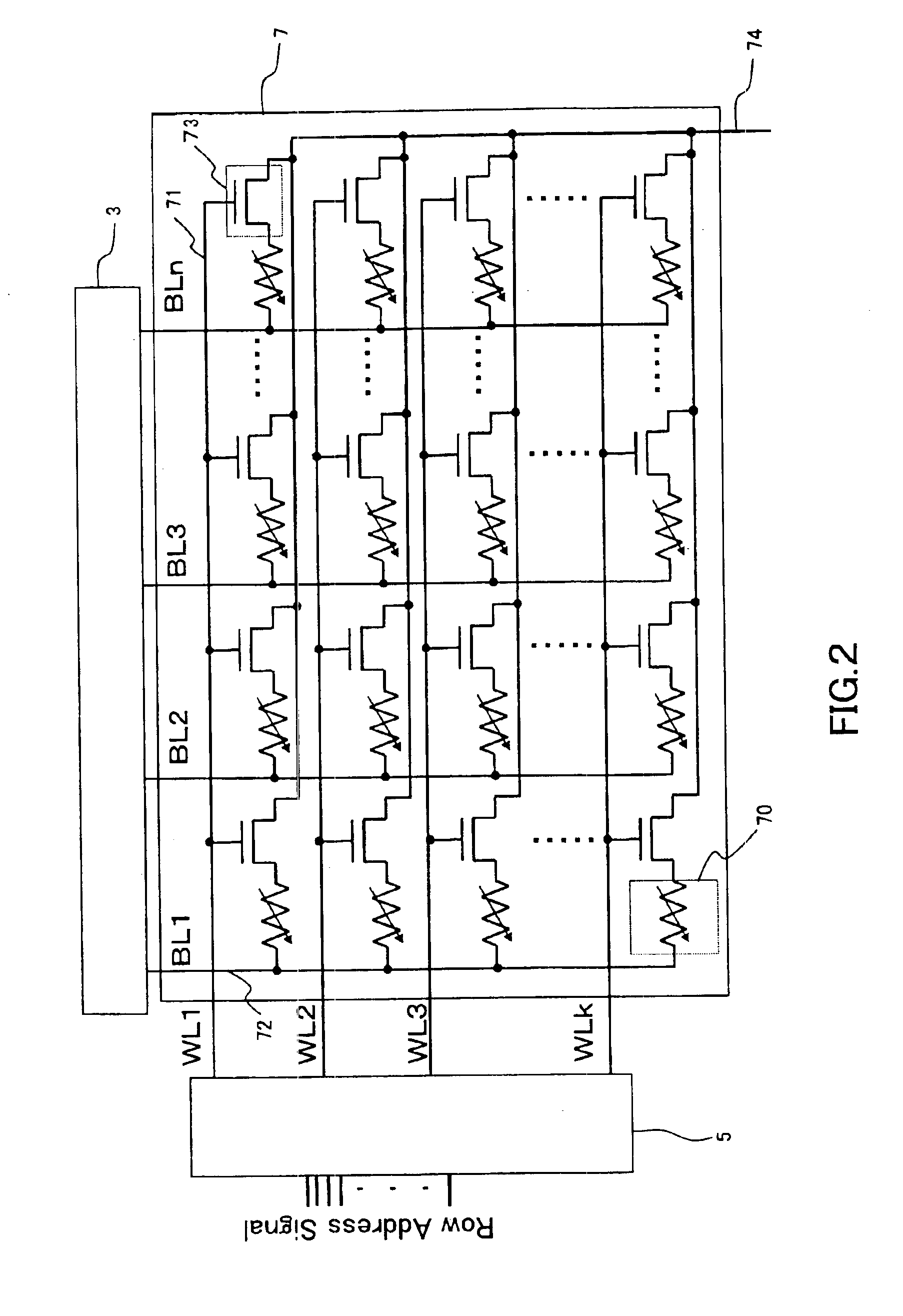Nonvolatile memory device
a memory device and non-volatile technology, applied in semiconductor devices, digital storage, instruments, etc., can solve the problems of difficult to accurately control the state at 3-level or larger multi-level storage in variable resistor elements, complex cell structure, and high integration, so as to improve multi-level storage capacity and improve read operation. , the effect of high speed
- Summary
- Abstract
- Description
- Claims
- Application Information
AI Technical Summary
Benefits of technology
Problems solved by technology
Method used
Image
Examples
Embodiment Construction
[0040]An embodiment of a nonvolatile memory device (which hereinbelow will be alternatively referred to as a “present inventive device” in appropriate portions) according to the present invention will be described hereinbelow with reference to the accompanying drawings.
[0041]FIG. 1 is a functional block configuration diagram of a present inventive device 100. The present inventive device 100 has a function of storing externally input 16 bits of 2-level data in eight memory cells. Each of the memory cells is capable of storing 4-level data (2 bits).
[0042]The present inventive device 100 has an input level detection circuit 1, a program data latch circuit 2, a program pulse generation circuit 3, a comparison / determination circuit 4, a row decoder 5, a column decoder 6, a memory array 7, and a program voltage generation circuit 8. In addition, although not shown in the drawing, the present inventive device has a control circuit for controlling the entirety of functional blocks, and a r...
PUM
 Login to View More
Login to View More Abstract
Description
Claims
Application Information
 Login to View More
Login to View More - R&D
- Intellectual Property
- Life Sciences
- Materials
- Tech Scout
- Unparalleled Data Quality
- Higher Quality Content
- 60% Fewer Hallucinations
Browse by: Latest US Patents, China's latest patents, Technical Efficacy Thesaurus, Application Domain, Technology Topic, Popular Technical Reports.
© 2025 PatSnap. All rights reserved.Legal|Privacy policy|Modern Slavery Act Transparency Statement|Sitemap|About US| Contact US: help@patsnap.com



